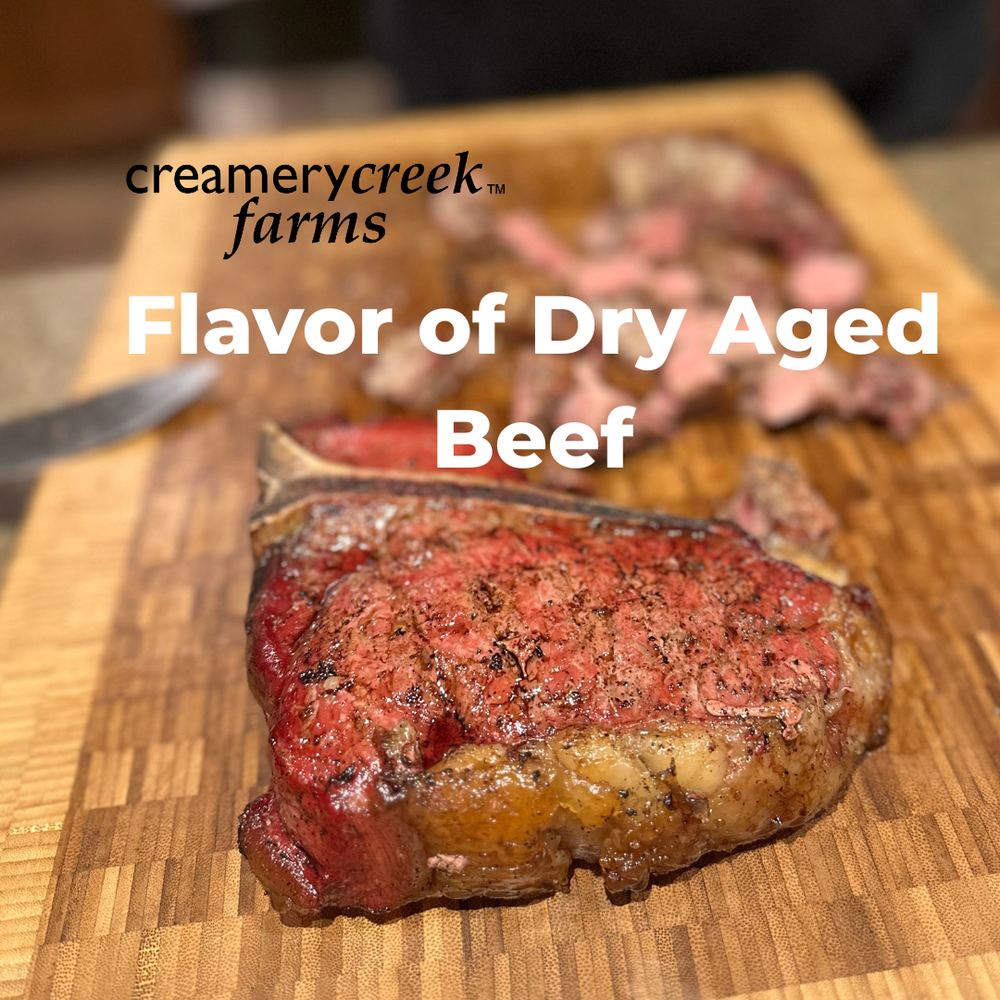
When people hear the words dry aged beef, their first thought is usually “fancy” or “expensive.” But the real magic lies in the taste. Once you’ve tried it, you’ll understand why dry aging has been practiced for centuries and why it’s worth the wait.
The Science Behind the Flavor
Dry aging happens when beef is stored in a climate-controlled room for several weeks. During this time, two things work in your favor:
Moisture Loss: As water slowly evaporates from the meat, the natural beef flavor becomes more concentrated.
Enzyme Action: Natural enzymes break down muscle fibers, creating tenderness and unlocking new flavor compounds.
This isn’t about adding anything artificial, it’s about letting nature refine what’s already there.
So, How Does It Actually Taste?
People describe dry aged beef with words you don’t usually hear for steak:
Nutty: Almost like roasted hazelnuts or walnuts.
Buttery: A richness that coats your mouth without feeling greasy.
Beefier: The essence of steak turned up a notch.
Slightly Earthy: Some compare it to mushrooms, truffles, or even a hint of blue cheese in deeper-aged cuts.
The longer the beef is aged, the more pronounced these flavors become. At Creamery Creek, for example, our standard 21-day dry age creates a bold, beef-forward flavor, while our creekreserve line at 28+ days deepens the nutty and earthy notes.
Why It’s Different from Fresh Beef
Fresh beef is delicious in its own right, bright, juicy, and clean-tasting. But dry aged beef offers something layered and complex. Think of it like the difference between a young cheddar and an aged cheddar. Both are cheese, but one carries more depth, maturity, and character.
The Eating Experience
Biting into a dry aged steak isn’t just about flavor, it’s about feel. The tenderness from the enzyme action means the beef practically melts as you chew. The seared crust develops an almost caramelized flavor, while the inside stays juicy and rich.
Is It For Everyone?
Some people fall in love with dry aged beef instantly. Others need a few bites to adjust to the unique flavor. It’s a little like trying wine for the first time, you start to pick up notes you never expected. That’s part of the adventure.
We don't go out for food often, just the nature of farm life. But this is the type of beef our family loves, because it is extra, and still be prepared at home. Best of both worlds. I hope you give it a try too! And then tell me how it goes for you!
XOXO,
LOuisa



Dejar un comentario
Ver artículo completo
The Church Method for Perfect Beef Roasts
There is a whole world of cooking that never made it into cookbooks. It lives in church basements and community halls where somebody’s aunt has been feeding a crowd for decades and never once owned a digital thermometer. The “church basement method” is simple. Multiply the weight of your roast by time, set the oven to a steady low heat, and follow one important rule. Don’t peek.
It works with everyday beef roasts like sirloin tip, chuck, rump, and top round, which means you do not need a prime rib to put something special on the table.
Ver artículo completo
Slow Cooker Meals for Busy Farm Nights
When chores run late and the weather turns cool, nothing beats a slow cooker meal waiting at the end of the day. Here are our favorite Creamery Creek cuts and easy ideas for fall and winter suppers that cook themselves while you work.
Ver artículo completo
Sweet & Tangy Holiday Meatballs (Farmhouse Appetizer Recipe)
There’s always that one dish that disappears first at every holiday party and these little meatballs are it. Made with our own Creamery Creek Meatball Mix (a blend of dry-aged beef, Duroc pork, and just the right touch of onion), this recipe brings that cozy, sweet-and-smoky flavor everyone loves. A quick toss in sweet fruit jam and BBQ sauce blend, a brush under the broiler, and you’ve got the perfect farmhouse appetizer for the season.
Ver artículo completo